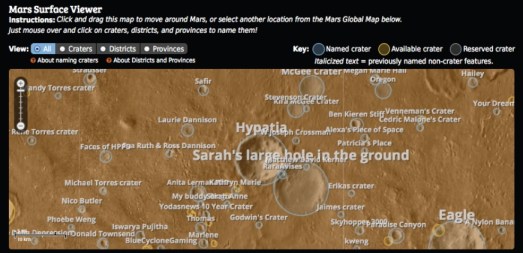Here is a list of some space advocate related events this year:
* Humans to Mars Conference 2014 – April 22-24, Washington D.C.
H2M 2014 will continue the discussion started at the H2M 2013 Summit to explore how humanity can land on Mars by the 2030s. This event will feature a myriad of topics and discussions on:
– New concepts of Mars architectures
– Updates on science missions and objectives
– Planetary protection
– In Situ Resource Utilization
– Human factors
– International cooperation
This event will also pay special attention to engaging the public.
H2M 2014 will feature some of the most prominent people in space exploration as well as policy experts, business leaders, media personalities, international representatives, academic leaders, and members of the entertainment community.
2014 H2M will be a highly interactive conference. In addition to the onsite audience, we anticipate having over a thousand schools viewing H2M as well as tens of thousands of individuals from around the world viewing and participating online in the event. While H2M will be based in Washington, DC, our goal is to create a worldwide Mars exploration event.
* ISDC 2014: A Space Renaissance – May 14-18, 2014 — Los Angeles, California
The annual conference of the National Space Society:
Among our special guests are Elon Musk, CEO of SpaceX, Lori Garver, former Deputy Administrator of NASA, and astronaut Chris Ferguson. Tracks include: Living in Space, Mars, NASA/Exploration, Space-Based Solar Power, Space Engagement, Space Enterprise, Space Experience, Space Policy, Space & Media, Space Settlement, and Transhumanism. Other activities include: NASA Commercial Crew Program Panel, Space Tourism Panel, Science Panel, Space Arts, Students Movie Night – A Festival of Short Mars Films, Telescope Party, Student Space Settlement Design Contest Awards Ceremony, SpaceUp, and T-5 talks.
* NewSpace 2014 – July 24-26, Silicon Valley, California
Space Frontier Foundation is delighted to announce its list of panels for the NewSpace 2014 conference to be held between July 24-26 in Silicon Valley, CA. NewSpace 2014 is proud to usher in a broad spectrum of space related topics that will influence new ideas and innovation and serve as a stepping stone for the future of commercial space exploration and development.
The panelists will share their experience and expertise on a range of topics which include:
Orbital Debris – The panelists will discuss current and future opportunities for marketizing insurance against and removal of orbital debris.
Space Data – This panel will explore how and why organizations who collect this data make it available to their users as well as how the users apply the data from space to make discoveries and solve problems on Earth.
DIY Space Movement – The panelists will discuss how the DIY technologies are democratizing space exploration and how this movement will develop in the near future to both empower the citizen explorer and escalate humankind’s presence in space.
In addition to the aforementioned topics, NewSpace 2014 will host several other thought provoking panels and keynote speakers who will share their views on commercializing space. Have a glimpse at some of the programming for NewSpace 2014 and learn about what NewSpace has offered in the past by clicking here.
* International Mars Society Convention – August 7-10, 2014, League City, Texas
The four-day event will bring together key experts, scientists, policymakers and journalists to discuss the latest news on Mars exploration and efforts to promote a human mission to the Red Planet in the coming years.
* Int. Symposium for Personal and Commercial Spaceflight (ISPCS 2014) – Oct.15-16, Las Cruces, New Mexico
The International Symposium for Personal and Commercial Spaceflight (ISPCS) is the most relevant, high-value commercial space conference of the year. This year, through two high-impact days of dynamic dialogue and collaboration, ISPCS will address strategies to manage the risks and reap the rewards of the rapidly evolving commercial space industry. Handcrafted panel discussions will examine key industry issues and trends in the high-risk ventures of developing new platforms for suborbital space and beyond.
* SpaceVision 2014 – Oct.30-Nov.2.14, Univ. of North Carolina, Durham, N.C.
The annual meeting of SEDS (Students for the Exploration and Development of Space)
Join hundreds of passionate SEDS members from across the country in a celebration of space! SpaceVision is the annual networking conference for the Students for the Exploration and Development of Space and is run and led entirely by students.
Update: A reader sent me the time and place for the SEDS meeting.



